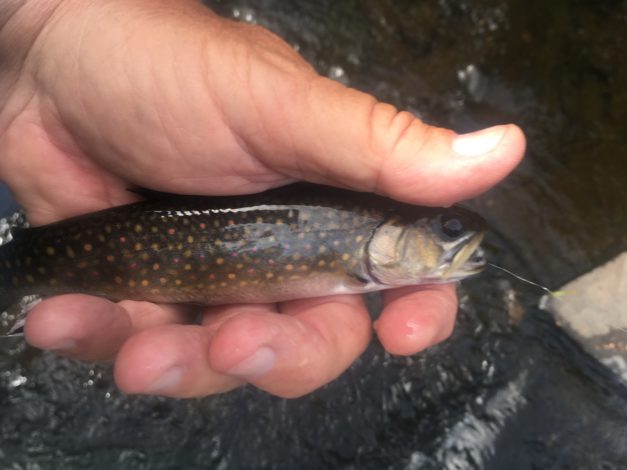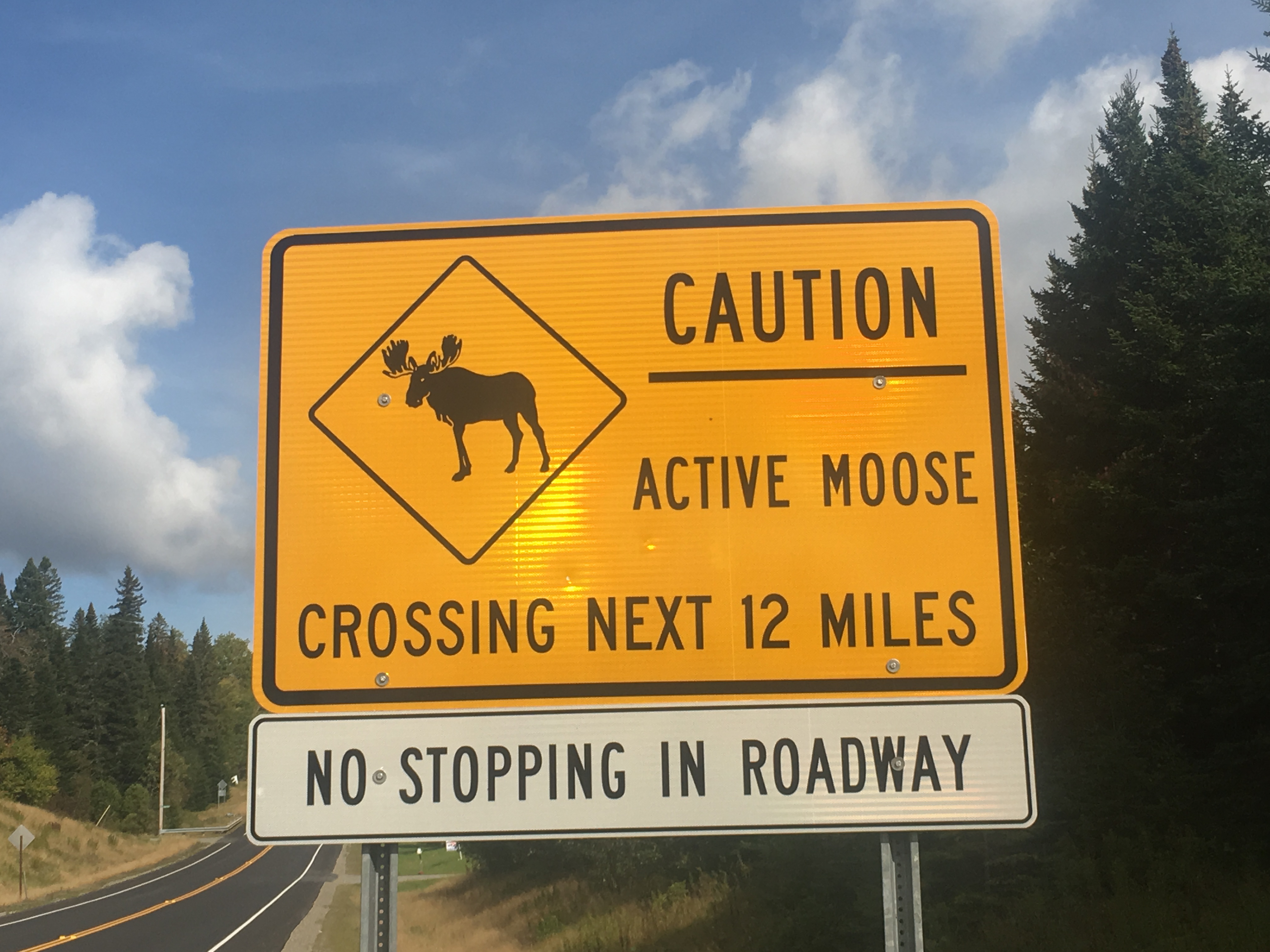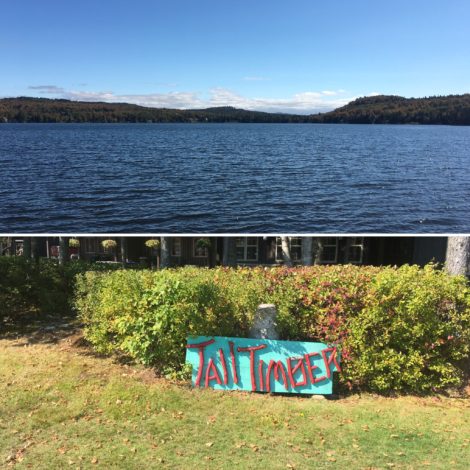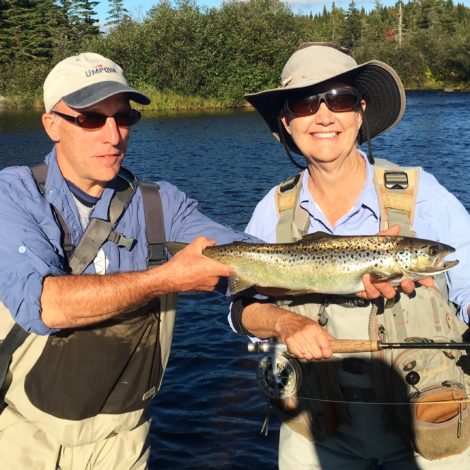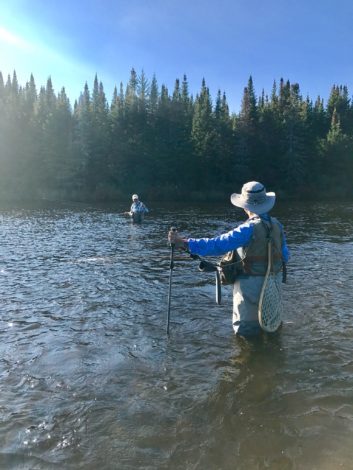There is only one river listed in the TU Guide to America’s Greatest 100 Trout Streams in the state of New Hampshire, the Upper Connecticut River. However, the author of the book notes that when you come, plan to stay for at least a week to fish the varied sections of the river, as well as all of the tributaries, ponds and lakes in the area.
On our “River Ramble”, Barb and I are fishing not just the Top 100, but as many other streams as we can. We did fish Indian Stream (and caught some beautiful small brookies) while we were in the Pittsburg, NH area, but really focused on the various sections of the Upper Connecticut. We’d been forewarned that the area around Pittsburg was “Moose Alley” and we were to be on heightened alert for moose.
When we arrived in Pittsburg, NH, which is by geographic size, the largest town in NH, we parked the SaraLinda at our campground that overlooked the First Connecticut Lake. Turns out the Upper Connecticut River actually has several dams and lakes including Lake Francis and the First, Second, Third and Fourth Connecticut Lakes. Between these lakes are beautiful, often fast flowing streams with both landlocked salmon and brook trout in residence. We were very excited to begin our “Ramble” in New Hampshire.
As always, we worked with a guide our first day in the area, Chuck Degray, owner/head guide, North Country Guide Shop and Fly Service. We met Chuck at the campground and were off for the day. We hiked into the woods a bit below the First Connecticut Dam and hooked into a few fish to start our day, catching them on nymphs. A little before lunch, we switched to dry flies and we both caught another beautiful rainbow trout.
We sat down to lunch on the lawn of the Tall Timber Lodge, a beautiful spot on Back Lake. Our view across the lake was spectacular as we plotted the afternoon’s fishing adventure. Chuck had three options and we couldn’t decide which to choose. Finally, the difference maker was a chance to catch landlocked salmon, so we headed off to a spot Chuck was excited to share with us.
As we hiked down a long trail to the water, we noted that if we were to come back on our own, we might want to leave a trail of bread crumbs to make sure we could find our way out at dusk. When we arrived at the place to fish, we saw a few fish rising in the water but not many. We tried to fool them with dry flies but to no avail.
Around 4:30pm, more fish started rising, and while they still weren’t interested in the dry flies or streamers we’d been trying to fool them with, Chuck recommended we try a wet fly. I know what many of you reading this are thinking…. aren’t they ALL wet? Well, of course they are all floating on or below the surface of the water, but wet flies float just beneath the surface and are typically “swung” with fish taking them on the swing, or more often than not, at the point the fly stops swinging and comes up to the surface.
Barb was in a spot with multiple rising fish and pretty quickly, BAM…. a fish hit her small wet fly and it was game on. We didn’t know how big it was until it decided to jump, and when it did, all of our eyes went wide. Barb and hooked into a 22” landlocked salmon and was fighting to coax it to Chuck’s waiting net. As always when you hook a fish of this size, sometimes you win, but most often the fish wins. This time, Barb won as you can see in the picture above.
It was hard to tell who was most excited, Barb or Chuck. It was a very large landlocked salmon for the river and Chuck indicated it was the largest he’d seen landed in well over a year. We ended up hooking several more of these magnificent fish before we had our “walk off” fish and were ready to call it a day.
In the coming days, we fished a few other spots Chuck was going to show us, but, didn’t fool any fish until we decided to hike back to the spot where Barb landed the big one. We actually decided to tie small strands of yellow rope to trees as we hiked down to make sure we’d find our way back. When we arrived at “our” spot, there was a couple already there. A guy was scouting spots to fish and his wife was on the bank reading and sunning. We told him about the wet fly working so well as he was fishing a different hole than we were. As they finally left the spot, we waited for the fish to start rising again. Sure enough, around 5pm this time, a rise here… a sip there… and in not too long, we hooked into a few salmon.
As we walked out, untying the yellow rope from our marked trees, we were so grateful to have been able to fish these beautiful streams in New Hampshire and to have had Chuck show us the river. We left New Hampshire knowing we’d come back to fish again, especially our newfound “honey hole” on the Upper Connecticut.

